We drove the Porsche Panamera Turbo and the Cadillac CTS-V to see which mega-sedan was better - here's the verdict
So our winner is the Panamera Turbo. Because it's SO worth it.

So how is the Panamera Turbo to drive?
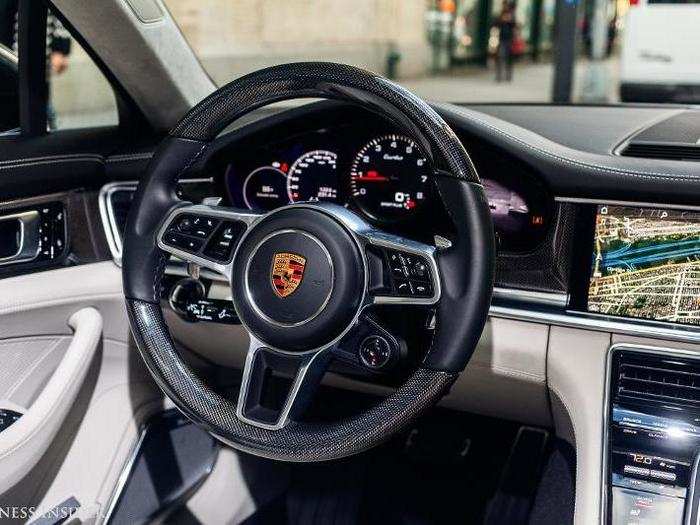
I personally prefer the big Turbo's little brother, the V6-powered 4S, but there's no denying that the Turbo is a tough-to-match combination of boulevard cruiser and spirited sports sedan. You might think this would mean the car has a dual-personality problem: a limo masquerading as a sports car, or vice versa.
Nope, the remarkable thing about the Panamera Turbo is that it's a car that can truly do it all.
Porsche infotainment system is much improved.
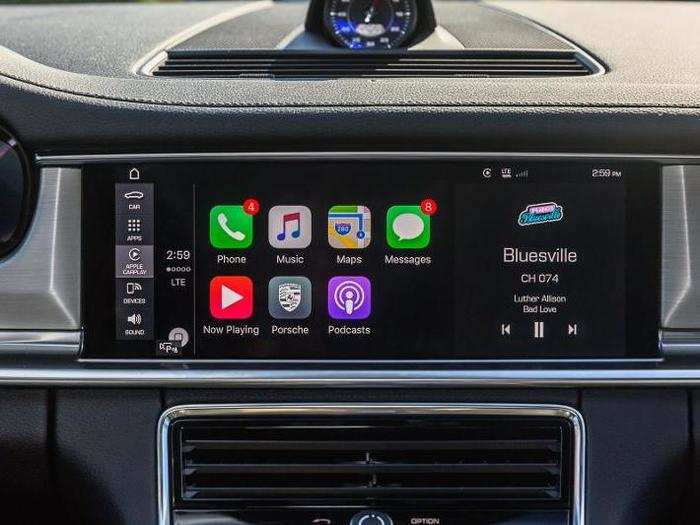
"The PCM system is a major leap forward for the German sports-car maker," we wrote in our selection of the Panamera as our 2017 Car of the Year. "It marks a major improvement in capability and usability over the previous infotainment system."
We added: "Overall, the Panamera's new infotainment system is a success. It's quick, responsive, and packed with features. But the system is complicated to use. It's an unfortunate byproduct of Porsche trying to deliver so much functionality in such a small amount of real estate."
All the critical features you'd expect are present, however. There's nothing Cadillac Cue can do that the PCM can't.
The Turbo has a 550-horsepower, twin-turbocharged V8 engine under the hood.
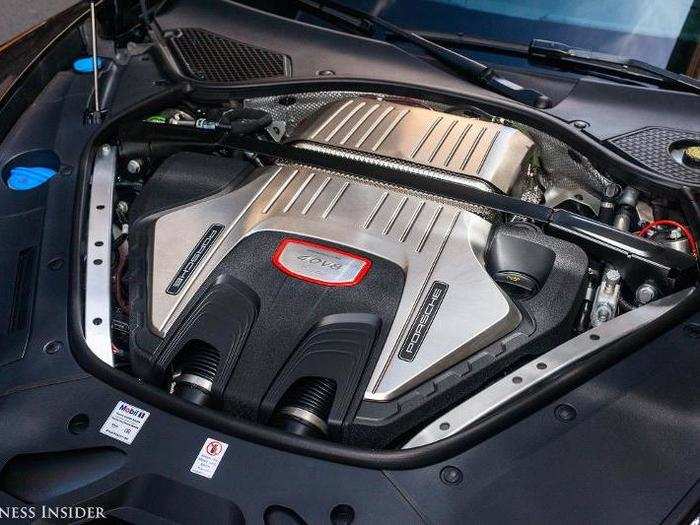
That 100 fewer ponies than the Caddy — but it doesn't feel like it! The Panamera Turbo exudes power with every stomp of the gas pedal.
The 0-60 mph time has been clocked at 3.4 seconds, meaning the Panamera and the CTS-V are in a near dead-heat on the drag strip. In the old days, you might have concluded that the performance comparisons would end once the cars have to go around corners and can't just duel in a straight line.
But the Caddy actually produced a lighter vibe when one's hands are on the wheel and one's eyes are seeking curves in the road. And guess what? The CTS-V weights about 300 lbs. than the Panamera (4,150 lbs. vs. 4,400 lbs.). For me, the Panamera Turbo had a solid, planted demeanor, and this actually bummed me out a bit. I wanted a little more Porsche sportiness.
The CTS-V, by contrast, had that wild vibe. Quite rewarding. The Panamera 4S with its smaller, 440-horsepower turbo six-banger gave me more of what I was looking for. But our competition here is between the CTS-V and the Panamera Turbo.
Some of the extra weight and ground-grabbing of the Porsche can be chalked up to all-wheel-drive. Both cars are running eight-speed automatic transmissions, the Porsche a dual-clutch unit with marvelous paddle shifters, the Caddy with an automatic-manual options that I didn't seem to want to use that much. Keeping it in Sport mode and letting the CTS-V do its own shifting was fine.
The Panamera Turbo, in all its glory, was our 2017 Business Insider Car of the Year.
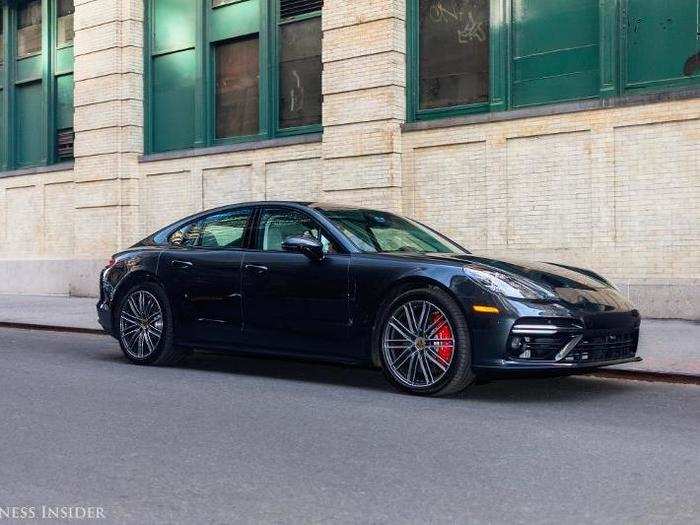
Read what we had to say about our award-winner.
Here's what BI's Ben Zhang had to say in his review of the car:
The new second-generation Porsche Panamera is an absolute gem of a car. The combination of old-school driving pleasure, state-of-the-art tech, and refined luxury make it a compelling option for anyone looking for a vehicle in this genre.
Even with a new chassis and electronics, the new Panamera is more evolutionary than revolutionary. But with the makeover, the Panamera now has the matinee-idol looks to go with its world-class ability. And with this, Porsche has created the finest sports sedan in the world. It's certainly not cheap, but boy is it good. If you are one of the blessed few who can afford a new Porsche Panamera, don't think — just do it. Your life will be better for it.
I second that opinion.
And what about the driving part?
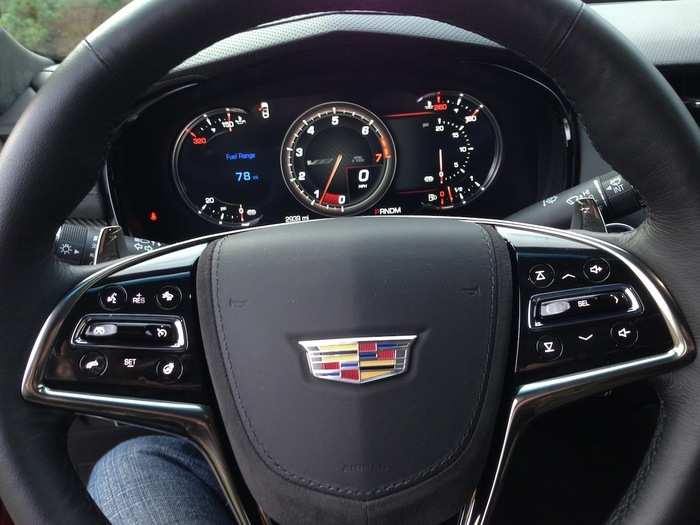
"Cadillac has been working on taking it to BMW's M cars for some time now, and with the CTS-V ... well, it may have taken it PAST the M's," I wrote in my 2016 review.
"The CTS-V bears no resemblance to the Caddys of the Carter and Reagan administrations, and it has grabbed the sports-sedan concept and pushed it into new territory. You can now have your midlife crisis without embarrassing yourself."
But now that checked back in with the car, how does it stack up against then Panamera? Well, let's find out ...
Cadillac Cue has become one of the best and most user-friendly infotainment setups available.
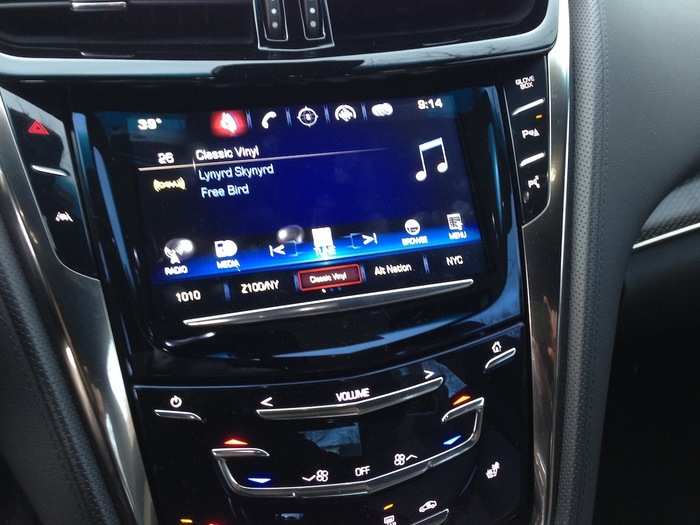
The large touchscreen is responsive, the Bose audio system sounds wonderful, there's easy Bluetooth connectivity, Apple CarPlay and Android Auto, and 4G LTE wifi.
There's a reason why this GM system was a runner-up for our BI Infotainment System of the Year in 2016.
The heart of the Caddy is the savage, 640-horsepower, supercharged V8 LT4 motor, which the CTS-V shares with the Corvette Z06.
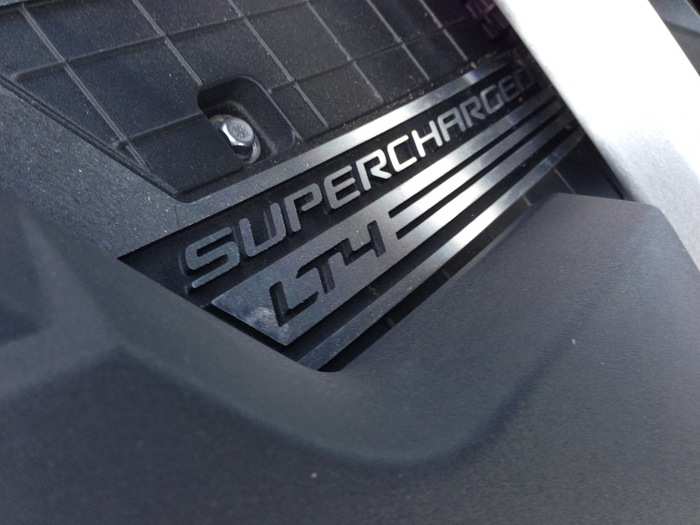
This engine is sublime. For my money, it's better than the Porsche's 550-horsepower V8, but I tend to think that big V8s get along better with superchargers than turbochargers (both increase the compression of airflow headed in an engine's cylinders for combustion, but superchargers are powered by the motor itself, whereas turbos are spun by engine exhaust).
The best part of driving a CTS-V, in many ways, is starting it up and hearing the gutsy roar and rumble. Because we're dealing with a luxury sedan here, out on the road the CTS-V isolated the driver and passengers from the exhaust note, but you can sure as heck feel those 640 horses doing their thing.
The eight-speed automatic has a manual mode, so you can use the paddles behind the steering wheel to shift your own gears. The CTS-V also has various drive modes, including a ferocious Track option. I found that skipping the paddles and going with Comfort and Sport modes were the best route.
"Driving the car is glorious," I wrote in 2016. "The Z06 requires constant attention. The CTS-V, by contrast, is an insane beast when you want it to be, possessed of earth-splitting violence delivered via a 0-to-60 time of 3.6 seconds."
I also more recently checked out the car in a fetching "Crystal White" paint job. It got some serious stares, but I still liked the CTS-V better in red.
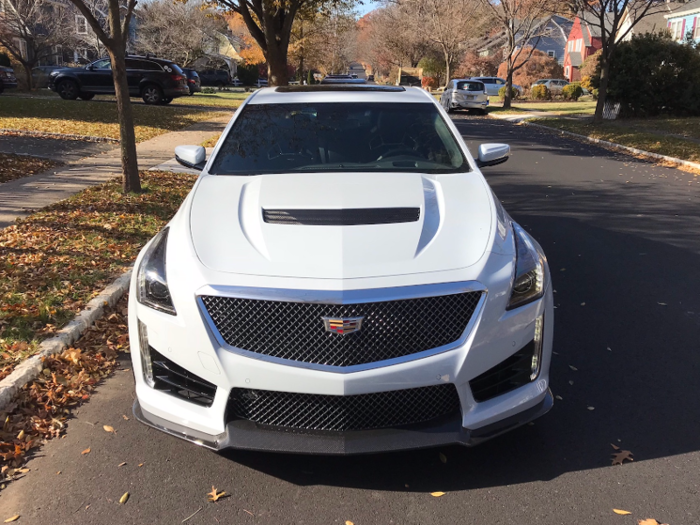
The CTS-V in "Red Obsession." I enjoyed the vehicle immensely. Our test car cost over $90,000 and was very well optioned. Base, the CTS-V is about $86,000.
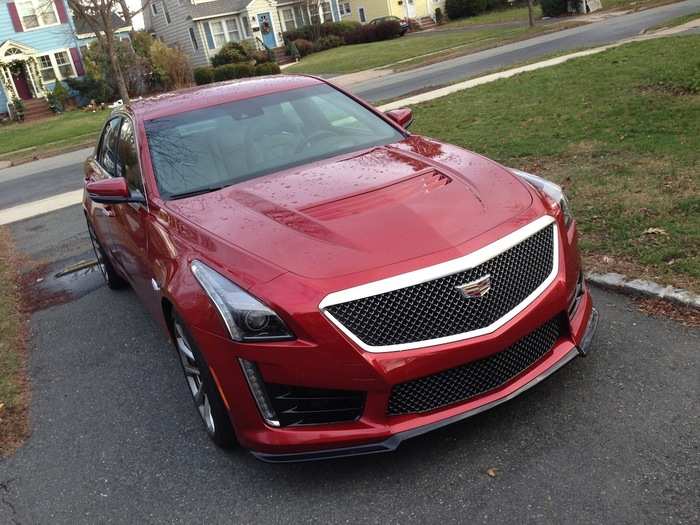
The "V" cars are Caddy's answer to high-performance versions of European sports sedans: BMW's M Sports, Mercedes-AMGs, and the Audi RS. And of course dedicated high-end rides, such as the Panamera. It's tough to climb much in the General Motors lineup than the CTS-V, however. With the Z06 and forthcoming ZR1 Vettes, you get mountains of power but no back seats, and the flagship CT6 Caddy doesn't yet come in V trim.
I will at this point acknowledge that one might not be cross-shopping a CTS-V and a Panamera Turbo. But then again, a lot of folks don't think they should cross-shop a Z06 and, say, a Ferrari 488. That doesn't mean they shouldn't.
Popular Right Now
Popular Keywords
- India’s wearables market decline
- Vivo V40 Pro vs OnePlus 12R
- Nothing Phone (2a) Plus vs OnePlus Nord 4
- Upcoming smartphones launching in August
- Nothing Phone (2a) review
- Current Location in Google
- Hide Whatsapp Messages
- Phone is hacked or not
- Whatsapp Deleted Messages
- Download photos from Whatsapp
- Instagram Messages
- How to lock facebook profile
- Android 14
- Unfollowed on Instagram
Advertisement